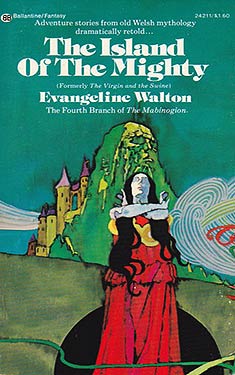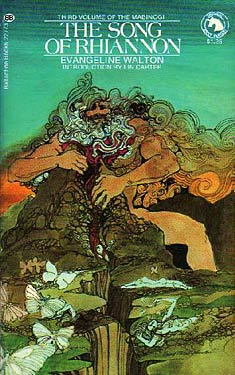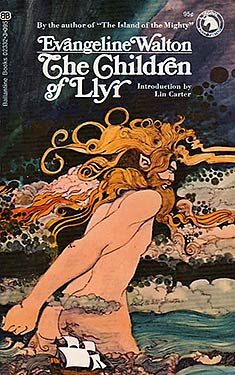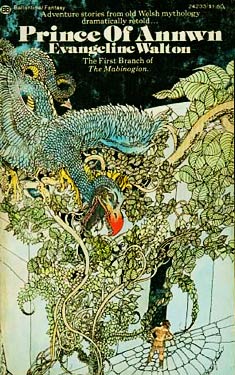Evangeline Walton
Completed 3/21/2022, Reviewed 3/22/2022
3 stars
This final branch of the Mabinogion was actually published first in 1936. It didn’t do well and thus the others weren’t published at all at that time. They were all finally published in the 70’s with this one being reprinted first. Why they were printed at this time out of order I don’t know, but reading it in the order I did made sense. This one was tough to get into because the heroes of The Song of Rhiannon are beaten by the main characters of this book. So it begins with you feeling like you’re being manipulated. By the end of this one, I did like one of the main characters and kind of liked another. But getting from beginning to end was difficult mainly for this reason.
The branch is divided into three sections. “The Pigs of Pryderi” takes us to King Math and his nephews, one of whom, Gwydion, is the crown prince. They discover that Pryderi from “Rhiannon” has been gifted pigs from Fae, animals that never existed on the Island of the Mighty. They get it in their heads to steal the pigs from Pryderi, which instigates a war. In addition, the nephew Gilvaethwy forces himself upon a virgin attendant of King Math. So lots of trouble ensues.
In “Llew”, Gwydion offers his sister Arianrhod as the new virgin attendant of the Math. The King discovers she’s pregnant and forces the baby out of her. The baby, Dylan, is a child of the water and swims away. In addition, something else comes out of Arianrhod which Gwydion saves and incubates. The result is Llew, whom Gwydion raises as his son, hiding him from Arianrhod.
In “Loves of Blodeuwedd”, Arianrhod hates her children and curses Llew. Gwydion finds ways to circumvent the curses, but nothing happens without consequences. In the last curse, Arianrhod prevents Llew from falling in love with a woman. So Gwydion creates a woman, Blodeuwedd, for Llew from magic. But even this goes awry and Gwydion must save Llew.
The first story didn’t endear me to Gwydion because I had spent so much energy developing a relationship with Pryderi in “Rhiannon” who I was rooting for. It took most of the second part to come to sort of like Gwydion. Fortunately, Llew was pretty likeable and Gwydion’s caring for him softened me up to him as well. It was too bad the only women in the book are portrayed negatively, Arianrhod particularly. She represented the attempt to uphold the matriarchal values amid the conversion to a patriarchy. She’s the only strong woman in the book and all her energy is for evil. And in the end, she’s punished for it.
I give this book three stars out of five. The stories are good, intense, and dark. I just never felt completely immersed in them. The prose is good, but still felt archaic, and the world building is good. But I had no emotional connection with any of the characters. I wonder if this retelling were written today, with a more modern sense of prose and character development, would I have liked it more. I think the answer would have been yes.




